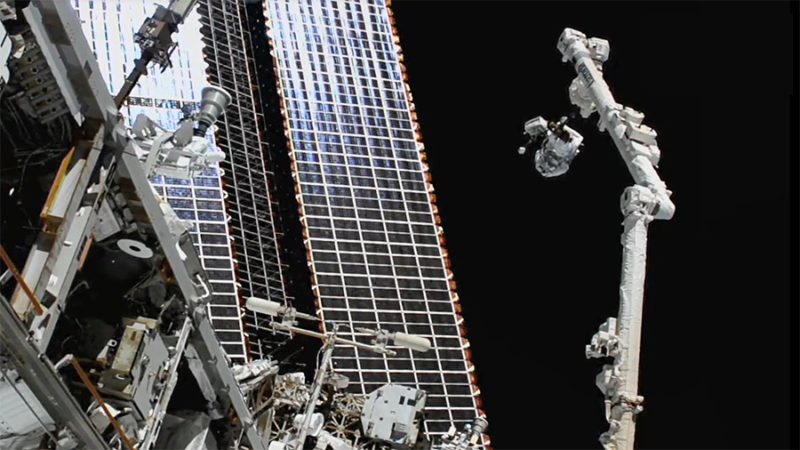
The oldest and youngest Americans ever to perform a session of Extravehicular Activity (EVA) outside the International Space Station (ISS) spent six hours and 32 minutes in open space on Thursday, labouring to remove and replace a hard-failed S-band Antenna Subsystem Assembly (SASA) from the P-1 truss segment. Sixty-one-year-old Tom Marshburn, making the fifth spacewalk of his career, and 34-year-old first-timer Kayla Barron deftly removed the faulty antenna and replaced it with an on-orbit spare from ExPRESS Logistics Carrier (ELC)-3. They also attended to a number of get-ahead tasks, before heading back inside the Quest airlock.
Records, as any astronaut will tell you, are there to be broken, and Marshburn became the first-ever U.S. sexagenarian to perform a spacewalk. He snatches the age record from fellow astronaut Jeff Williams, who was 58 when he performed a pair of EVAs in the summer of 2016, and also passes the empirical EVA world record-holder, Russian cosmonaut Pavel Vinogradov, who was almost 60 when he completed the last spacewalk of his career in April 2013.
Conversely, Barron—who has already surpassed Russia’s Ivan Vagner as the youngest “professional” crew member to visit the ISS—overtakes fellow U.S. spacewalker Paul Richards, who was 36 when he flew STS-102 in March 2001. Yet Barron still falls shy of being the youngest-ever female U.S. spacewalker. America’s first woman to walk in space, Kathy Sullivan, had just turned 33 when she made her historic EVA outside shuttle Challenger in October 1984.
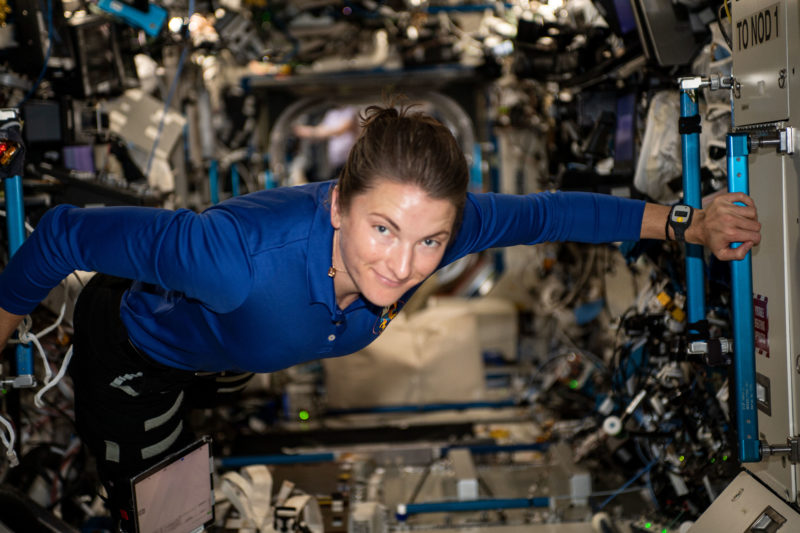
Today’s EVA first became necessary in September, during routine testing of String Two—one of two redundant “strings”—on the S-band antenna aboard the station’s P-1 truss. Both high and low data rates yielded similarly anomalous signatures, prompting Mission Control to advise Expedition 65 Commander Aki Hoshide of Japan that the antenna’s return link was considered “hard-failed”. In essence, uplink from the ground was possible, but downlink back to Earth could not be reliably achieved.
The S-band system comprises the Baseband Signal Processor (BSP) and the Tracking and Data Relay Satellite System (TDRSS) transponder, together with the Radio Frequency Group (RFG), which includes the low-gain and high-gain antennas. The complete SASA weighs some 228 pounds (103 kilograms).
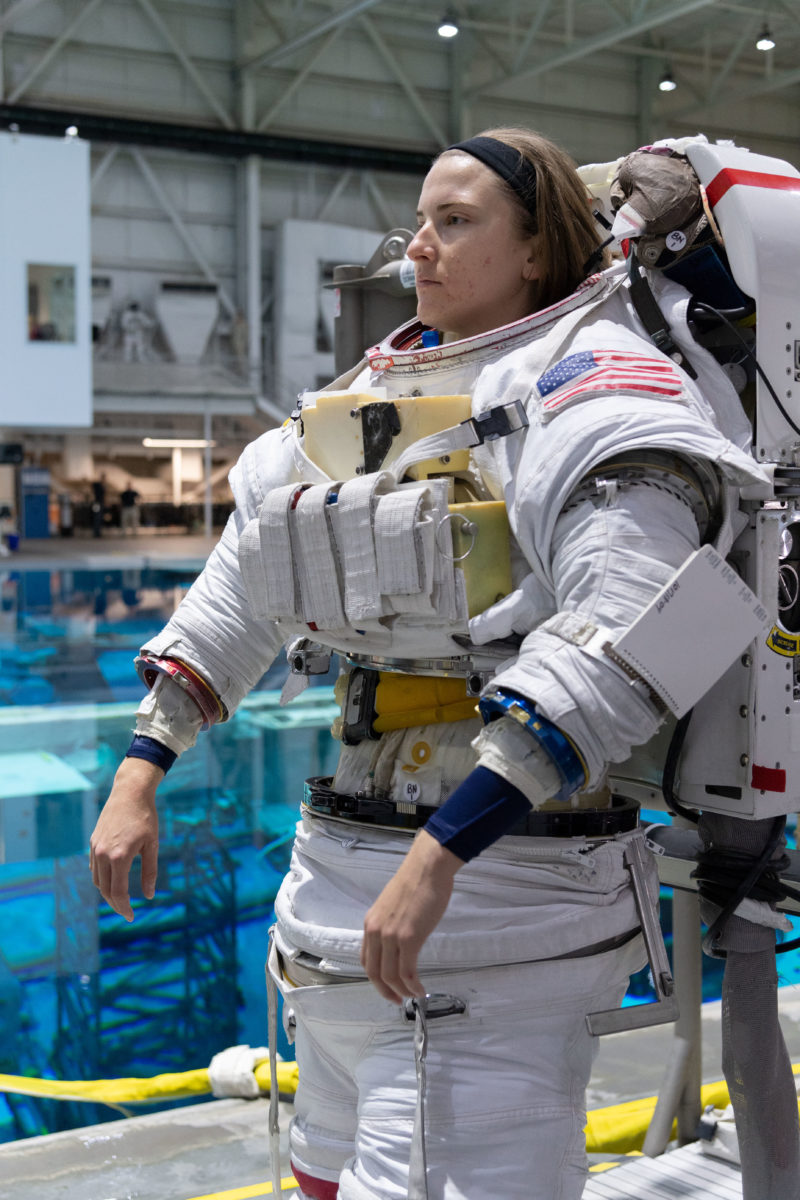
The antenna fastened in place today by Marshburn and Barron has a long heritage. Launched aboard shuttle Discovery on STS-92, way back in October 2000, it was initially located on the starboard face of the Z-1 truss segment, before being moved to a longer-term perch atop on the P-6 truss during STS-97 the following December. After the arrival of the P-1 truss aboard shuttle Endeavour in November 2002—only weeks before the tragic loss of Columbia—the antenna was set to be transferred again to its permanent home.
But with the shuttle program grounded for several years, it was not until August 2007 that STS-118 spacewalkers Rick Mastracchio and Clay Anderson removed the SASA from high atop the P-6 truss and relocated it to P-1. There it remained for more than a decade, exhibiting no problems until the late summer of 2021.
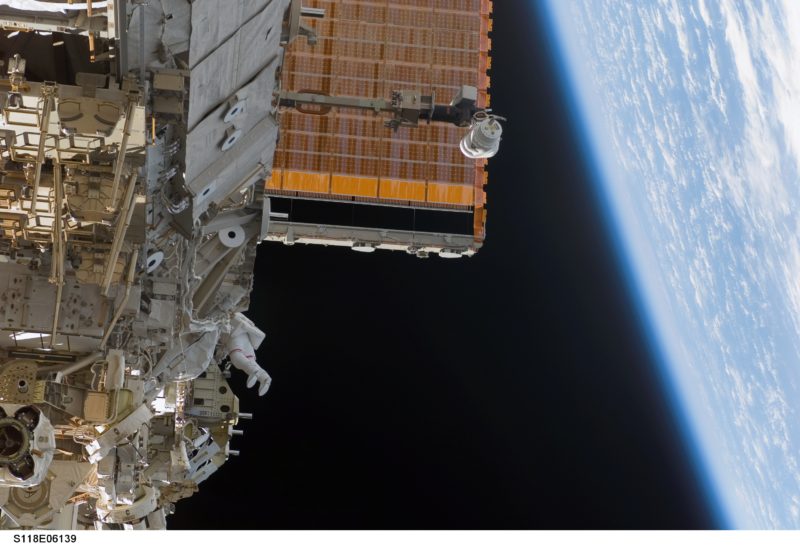
On the eve of Thursday’s EVA, the station was in possession of two “spare” SASAs, both of which have been on-orbit for more than a decade. They were launched on STS-134, shuttle Endeavour’s swansong flight, in May 2011, fastened to the top-side and keel-side Flight Releasable Attach Mechanisms (FRAMs) on ExPRESS Logistics Carrier (ELC)-3.
Preparations for the EVA have been ongoing for several weeks. In mid-October, the Hard Upper Torso (HUT) for suit 3004—earmarked for Barron—was resized from an Extra-Large (XL) to Medium (M), with corresponding adjustments also made to suit 3015 for Marshburn.
Both Extravehicular Mobility Units (EMUs) have lengthy flight histories, with each having supported more than 30 previous spacewalks over the last two decades, including the inaugural shuttle ISS construction mission and the final servicing call to the Hubble Space Telescope (HST). EMU 3004 was last used by Demo-2’s Bob Behnken during his four EVAs with Chris Cassidy in the summer of last year, whilst EMU 3015 was today supporting its sixth spacewalking session of 2021.
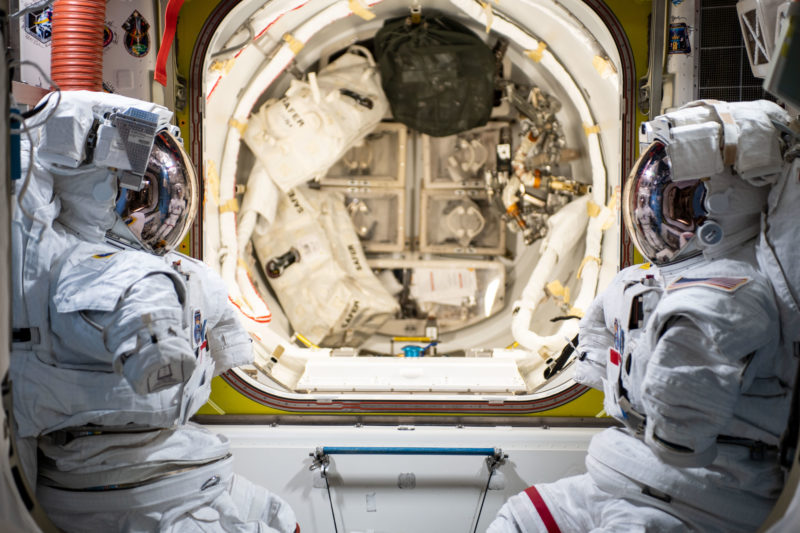
As the Expedition 66 crew resized and worked on the suits on-orbit, back on Earth the early warning of the SASA problem gave teams sufficient time for Marshburn and Barron to participate in training sessions in the waters of the Neutral Buoyancy Laboratory (NBL) in Houston, Texas. Following the arrival of the new crew aboard Dragon Endurance last month, efforts entered high gear.
The crew paticipated in procedures reviews using the Robotics On-Board Trainer (ROBoT) and practiced the suit-up process and installation of the Simplified Aid for EVA Rescue (SAFER) backpacks. Batteries for glove heaters were recharged, cooling loops were scrubbed and ventilating undergarments were filled with cooling water. With EVA-78 baselined for Tuesday, 30 November, the final days preceding that date were consumed with final checks of hardware, tools and cameras.
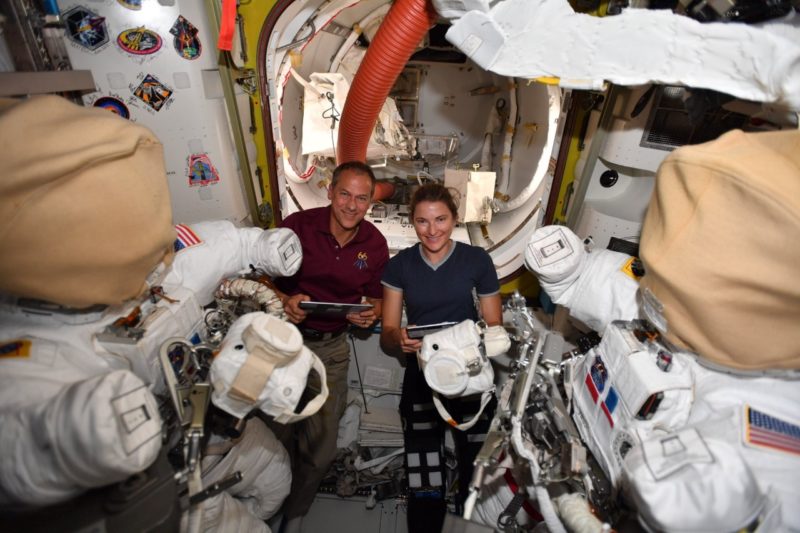
However, late Monday, only hours before the spacewalk was due to commence, NASA announced its cancelation, in response to “a debris notification”. It was noted that “the lack of opportunity to properly assess the risk it could pose to the astronauts” had led teams to postpone EVA-78 “until more information is available”.
At length, by Tuesday, the space agency had formally rescheduled the spacewalk for Thursday, 2 December. Yesterday, Marshburn and Barron continued to review procedures, aided by Expedition 66 crewmates Mark Vande Hei, Raja Chari and Matthias Maurer.
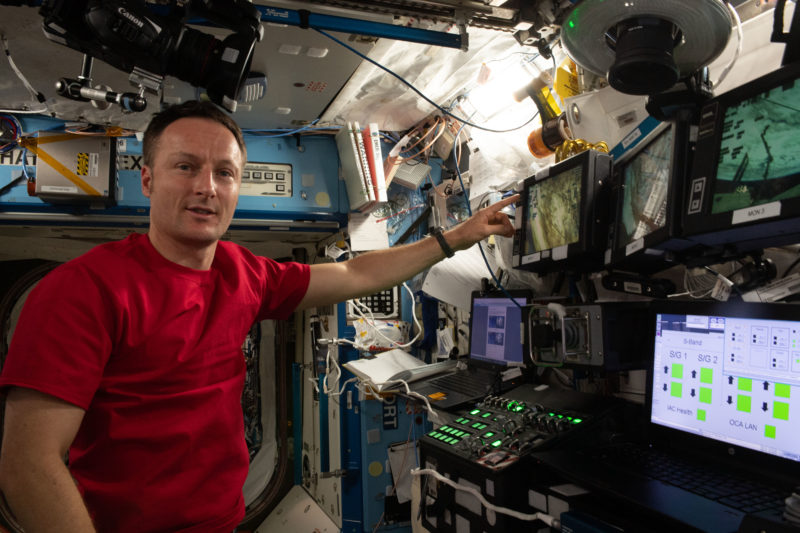
The crew awoke early Thursday and pressed directly into EVA preparations, inside the “equipment lock” of the Quest airlock. Marshburn and Barron participated in customary In-Suit Light Exercise (ISLE) protocols, flexing their arms and legs to speed up their metabolic rates and help rid their bloodstreams of excess nitrogen.
Vande Hei and Chari helped them to don their EMUs and SAFERs, the latter of which would be utilized as a self-rescue tool, should either spacewalker become physically separated from the station. At length, Marshburn and Barron were shoved, tools and all, into Quest’s outer “crew lock” and hatches between the two locks were sealed to begin the process of depressurization.
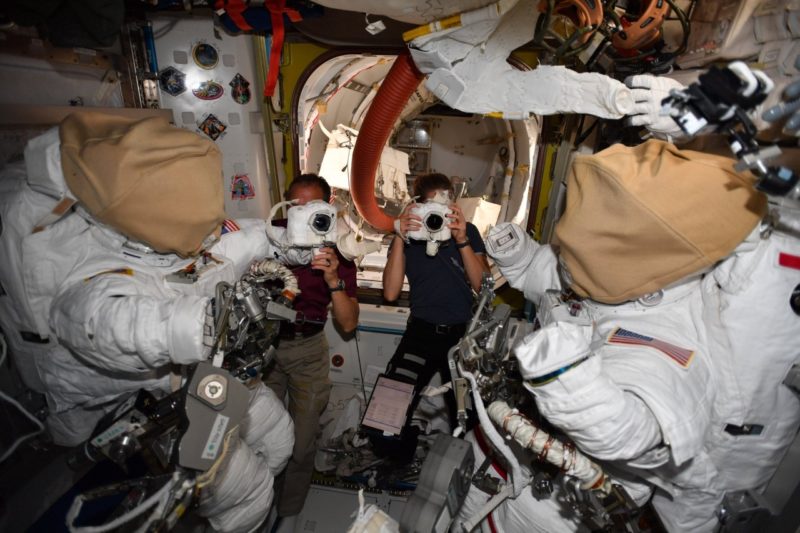
Overseeing today’s activity—designated “EVA-78”, the 78th spacewalk in U.S.-built suits, and conducted in the absence of the Space Shuttle, since February 2002—was a highly experienced Mission Control team at the Johnson Space Center (JSC) in Houston, Texas.
Leading the team was Flight Director Vincent LaCourt, with Spacewalk Officer Art Thomason, Ground Intravehicular (IV) communicator Drew Morgan and CapCom Jonny Kim. Marshburn and Barron transitioned their suits’ life-support utilities onto internal battery power at 6:15 a.m. EST, formally kicking off EVA-78. With Morgan’s calm voice in their earpieces, they set to work configuring tools and tethers and performing “buddy checks” of each other’s suits, before heading to work.
Working with a pace which belied her status as an EVA “rookie”, Barron headed briskly along the Integrated Truss Structure (ITS), past the failed SASA on the P-1 truss and continued outboard to ELC-3. Reaching her first worksite about 25 minutes into the spacewalk, she stowed bags and retrieved a rigid tether to temporarily stow the failed antenna.
She then rejoined Marshburn, who had by this time installed an Articulating Portable Foot Restraint (APFR) onto the 57.7-foot-long (17.6-meter) Canadarm2 and ingressed to commence motion. The giant arm was commanded by Germany’s Matthias Maurer, with Chari backing him up. “Enjoy the ride,” Barron cheerily remarked at one stage, as Marshburn set off.
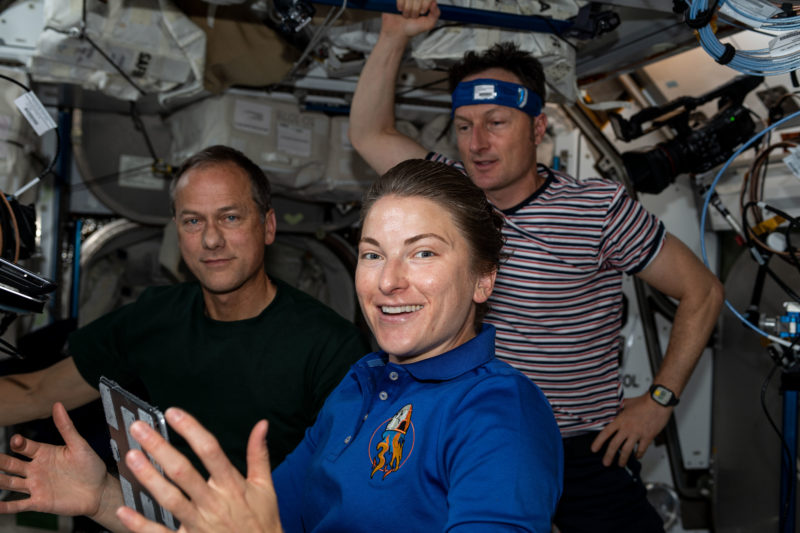
The pair detached and temp-stowed the failed SASA, then removed the replacement antenna from its FRAM on ELC-3. With Marshburn holding the new SASA from his position at the tip of Canadarm2, Barron set to work with a hand-held Pistol Grip Tool (PGT) to drive a pair of bolts to secure its stanchion into place on the P-1 worksite. By this point, EVA-78 was already running more than an hour ahead of the timeline.
With the new antenna firmly in place—and heater power, functional power and data connectors installed—the spacewalkers returned to ELC-3 to attach protective thermal blankets and secure the failed unit into the empty FRAM. Since only its “return” link capability is gone, it can remain on the station as a “degraded spare”, for possible future use. Marshburn has now accrued 31 hours and one minute at the end of his fifth EVA, whilst Barron wraps up the first spacewalk of her career with six hours and 32 minutes.




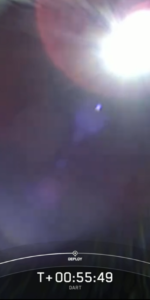
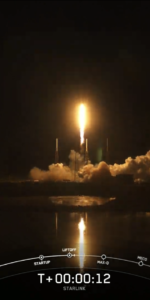
3 Comments
3 Pings & Trackbacks
Pingback:CRS-24 Returns to Earth, Wraps Up Month-Long ISS Stay – AmericaSpace
Pingback:Chari, Maurer Complete ISS Upgrades in Lengthy U.S. EVA-80 - AmericaSpace
Pingback:Crew-3 Returns Home, Wraps Up Six Months on Space Station - AmericaSpace